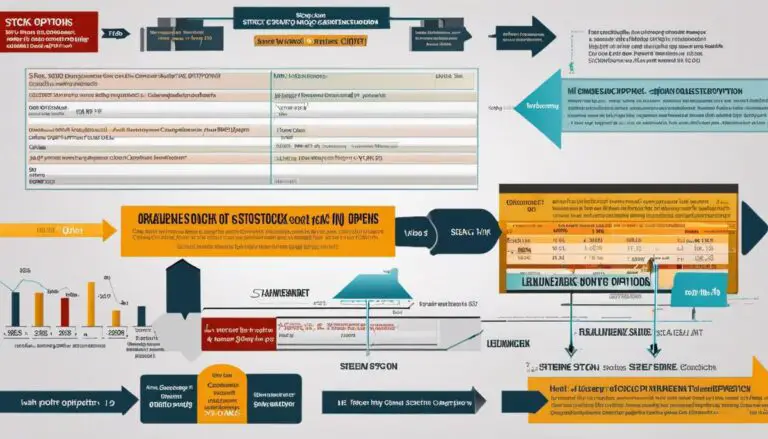An investment strategy known as diversification has consistently proven to provide investors with an effective safety net against market fluctuations. Adorning the core principle of ‘not putting all eggs in one basket’, this tactic not only aims to optimize returns, but also to minimize overall risk. What makes diversification one of the key tools in any savvy investor’s toolbox is its potential to offset losses from one kind of investment with gains from another. While benefits are plenty, it’s crucial to understand the potential pitfalls of over-diversification and ways to navigate them effectively. With different types of diversification strategies to explore, picking the right mix involves consideration of factors such as risk tolerance, financial objectives, and the investment time horizon.
Understanding Diversification Investment Strategy
Successful businesses ride the wave of constant innovation and proven strategies. One such strategy that has stood the test of time in the world of finance is diversification. This article aims to shed light on the essence of a diversification investment strategy and its effectiveness in managing financial risk and increasing profits.
Diversification, in essence, is the process of investing in a variety of assets to spread risk and potential reward across a wide spectrum. Often described as ‘not putting all eggs in one basket’, this investment approach involves acquiring a wide range of investments within a portfolio to prevent any single investment from having too much influence.
The diversification investment strategy operates on the simple concept, the more diversified your investments, the lesser is the impact from any single one. This stems from the fact different investments often perform differently under varying economic conditions. It forms the cornerstone of a balanced and robust portfolio, minimizing the impact of volatility and safeguarding potential returns.
A diversified investment portfolio might include a mix of stocks, bonds, commodities, and cash equivalents spread across different sectors, geographical regions, and types of security. The goal is to create a blend that potentially maximizes returns and minimizes risk.
Choose a variety of stocks across industries such as technology, healthcare, finance, manufacturing, and others. Diversify holdings across blue-chip companies that have a long history of stability and newer companies that have massive growth potential.
Adding bonds to a portfolio can provide income and cushion some of the ups and downs. Commodities like gold can provide a hedge against inflation and geopolitical unrest. International diversification, or having assets in various countries, can help smooth out the bumps when a particular market is underperforming.
However, simply creating a diversified portfolio isn’t the end-all-be-all. Regular review and rebalancing is the key to maintaining the balance as investments will grow at different rates, altering the allocation percentages and potentially increasing risk.
In conclusion, with all its benefits, diversification remains a crucial investment strategy to mitigate risk and generate steady, long-term financial gain. Whether you’re a beginner or an experienced investor, adopting a well-rounded diversification investment strategy can be your key to steady growth and resilience amid market turmoil.
Remember, while no investment strategy is foolproof, taking calculated steps towards diversifying your portfolio is one of the fundamental rules of the game in the world of investing.

Benefits and Risks of Diversification Strategy
The Diversification Investment Strategy: Unveiling Further Advantages and Potential Limitations
Permit me to begin with a business axiom: “For every action, there is an alternate and opposite reaction.” This perfectly encapsulates the essence of diversification in the world of investment. The beauty – and complexity – of diversified investing rests in its dual aspect of safeguarding and expanding a financial portfolio.
Advocates appreciate diversification for numerous reasons. This method of investment actively allows for compelling opportunities to identify and tap into revenue streams beyond domestically focused equities. Global investment opportunities offer a chance to ride the wave of fast-growing, emergent economies, increasing the potential for exceptional returns.
Furthermore, diversification permits entrepreneurs to capitalize on sector-specific trends that might be absent in, or incongruent with, their geographic location. For instance, thriving sectors in other countries might present prosperous avenues untouched by domestic investors. Diversifying internationally could yield dividends during domestic market downturns, ensuring continued growth and profitability for the seasoned investor.
One more item for our benefits list: tax efficiency. Asset location – emphatically not a typo for asset allocation – refers to the strategic placement of investments based on tax advantages. For example, placing interest-generating investments, which can often attract higher taxes, in tax-advantaged accounts to maximize after-tax income.
However, it’s not all clear skies. For investors, ramifications are as pivotal as benefits. The inherent complexity of the diversification investment strategy can prove to be a stumbling block for many. The management of numerous assets across different regions and due diligence of worldwide market trends requires specialized knowledge, resources, and a commitment of time – all in short supply for the busy entrepreneur.
Concurrent with this, varying tax codes, laws and market regulations around the world add another layer of complexity. The compliance cost, risk of administrative oversights, and legal implications of transgressions require careful consideration before diversification is undertaken.
Moreover, the lack of enough reliable data or comprehensive understanding of foreign markets might hinder sound investment decisions. Market opacity or political instability can create situations where the risk outweighs the benefit.
Then there is the foreign exchange risk. Exchange rates fluctuate, and these movements can impact investment returns. While a weak domestic currency might amplify gains, a strong one can potentially erode them.
Greater diversification allows for a potential decrease in investment risk, an aspect often celebrated in the investor’s domain. Nevertheless, diving deeply into its labyrinth might lead to untreaded considerations. The decision ultimately lies with the individual investor, surely, but one immense irrefutability prevails: prudence, vigilance, and agility should anchor every investment decision. With this mindset, the diversification investment strategy can be navigated skilfully, leading to its ultimate bounty – financial growth and sustainability.

Different Types of Diversification Strategy
Shifting the Spotlight to Different Types of Diversification Strategies
After understanding the foundational principles of diversification, let’s delve into the versatile ocean of Diversification Strategies. There’s more to comprehending diversification than spreading investments across asset classes. Shining the spotlight on different dimensions of diversification strategies can fuel investment philosophy and stimulate potential gains.
As an economic symphony, Diversification Strategies could be distilled into three prime movements: Concentric, Horizontal, and Conglomerate.
Concentric Diversification is akin to expanding the product portfolio within a familiar market. With underpinning knowledge of market dynamics and customer behavior, adding related products or services to an existing line is a viable growth strategy. Here, the harmony lies in utilizing existing resources and operational efficiencies for amplified profitability. When Microsoft expanded into cloud services from operating system software, it was a classic move of concentric diversification.
Witnessing a greater wave, Horizontal Diversification is the confluence of investing in unrelated industries with the same customer base. This strategy capitalizes on brand loyalty and customer trust to break into new markets. A quintessential example, Amazon’s journey into the world of digital streaming services and grocery retail from an online bookstore, manifests the enriching potential of horizontal diversification.
Then there is the bold face of Conglomerate Diversification – a pivot into uncharted waters of unfamiliar markets and products. This daring strategy can open floodgates of untouched markets and create compelling value propositions for consumers. The classic trajectory of Virgin Group from music records to aviation and space travel is a testament to the possibilities within conglomerate diversification.
These diversification strategies are not exclusive, solitary shapers of investment portfolios. They intertwine and interact, contributing to the ultimate investment mosaic. The fine print? One cannot dive into the labyrinth of diversification without a bird’s-eye view of their risk-appetite, short and long-term financial goals, and understanding the complexity and fluidity of multiple markets.
Selecting the appropriate strategy is equally critical. It hinges on market intelligence and strategic ambition. If identifying a profitable niche within the familiar market seems feasible, concentric diversification would be the strategy of choice. Seeking customer-base expansion? Horizontal diversification comes into play. But when risk-tolerance is high and a quest for untapped opportunities surfaces, conglomerate diversification murmurs the melody of potential gains.
Remember, the diversification strategy is not a one-size-fits-all formula. It echoes an understanding of market dynamics, reliable data, and spurs from an entrepreneur’s vision. Flexibility to adapt strategies in response to future disruptions underpins the essence of diversification.
A common thread shared among these strategies is the pivotal role of market research and regular rebalancing. Sound comprehension of sector-specific trends, vigilance of political stability, and the potential impact of foreign exchange risk is essential. The challenge lies in keeping your jigsaw puzzle of portfolios intact, while adjusting the pieces to fit the changing investment landscape.
Existence of risks? Absolutely. But the essence of investing magnifies the art of balancing risk and reward. Curate your investment orchestra with an encore of well-rounded diversification strategies, and witness your portfolio sing a song of resilience, stability and growth.

Practical Application of Diversification Strategy
To truly harness the power of diversification investment strategy in your portfolio, it’s essential to understand and practically apply its principles beyond the oft-cited ‘not putting all eggs in one basket’ theory. To do this, strategic allocation, investment timeframes, varying your asset classes, and understanding global markets play pivotal roles.
From the outset, investors must be clear about their financial goals and investment timeframes. This clarity can inform their diversification strategy– short-term investments typically require less risky portfolios compared to long-term investments. It also directs the investor’s focus beyond a single sector or region, fostering a concentration on varied markets across different time zones.
Allocating investments proportionally across asset classes plays a crucial role in executing an effective diversification investment. Remember, each asset you invest in should have a reason for being in your portfolio- whether they provide growing returns, hedge risks or stabilize your portfolio during market turbulence.
This highlights the importance of diversification within asset classes themselves – varying types of equities, different categories of bonds, a blend of commodities – each contributing to a certain investment goal. Adding an array of assets with different risk profiles improves the portfolio’s resilience and paves the way for potential returns under varying market conditions.
Conversely, understanding global market dynamics can offer exponential growth opportunities while buffeting market shocks. For instance, while one stock market may be experiencing a downturn, others may be faring well. Similarly, while one sector in a country might be underperforming, another might be on an upward trend. Thus, a worldview of investing can offer a strong defense against economic turmoil while potentially capitalizing on significant sector-specific growth.
However, realizing promising returns from diversified investments around the globe is not without its challenges. To navigate these, investors must understand global market trends, regulations, and overcome the lack of reliable data from foreign markets. Political instability and market opacity may pose risks, while changes in foreign exchange rates can significantly impact investment returns.
Nevertheless, a calculated approach, diligence, and agility in investment decisions can mitigate these risks. Monitoring your diversified portfolio, rebalancing it, and adjusting it to align with changing market conditions and personal financial goals would also be demanded.
Finally, the diversification approach one opts for – be it the concentric, horizontal, or conglomerate strategy – depends on various factors. These factors include, but are not limited to, the investor’s risk appetite, market dynamics, financial objectives, and knowledge of specific sectors or industries.
While diversification is a well-accepted strategy in wealth creation and preservation, it’s imperative to note that it does not guarantee absolute safety from investment losses. It does, however, provide an investor with a strong armor against market volatilities and diverse avenues for potential returns. In the world of investing, diversification is not just an option but an essential tool in an investor’s toolkit.
Remember, the key to a successful investment strategy lies in finding the right balance. As the old saying goes, never put all your eggs in one basket. Instead, cleverly distribute them across multiple baskets. Know where to place your eggs, how many eggs you should have, and constantly monitor the health of your basket. In the grand scheme of things, reinventing and innovating investment strategies are just as important as creating them. After all, when it comes to investing, diversification is indeed the name of the game.

Trends in Diversification Investment Strategy
Infusing Innovation into Diversification Investment Strategy
The diversity and dynamism that characterize today’s global market have catapulted the traditional investment diversification strategy into a forward-looking, innovation-driven approach. Investors, now more than ever, need to adopt savvy strategies that not only secure stable returns but also tap into growth-fueled opportunities. As the world of finance continues to evolve, so too must investment strategies, particularly in the area of diversification.
The application of technology has rapidly transformed investment diversification. For example, robo-advisors and AI algorithms provide quicker, more accurate assessments of market trends and more tailored investment suggestions, often in real-time. The advent of fintech paves the path for automated diversification, which could signify less manual effort and more precise decision-making for portfolios.
Exciting innovations span across the field of sustainable and impact investing. Among the more disruptive market trends are cryptocurrencies and blockchain technologies, requiring stakeholders to rethink traditional diversification models. While these novelty areas possess inherent risks, they also provide a vista of boundless possibilities that could be part of a well-diversified investment portfolio.
In addition, the rise of thematic investing adds a novel layer to diversification. Deep tech, green energy, genomics, and cyberspace security are among the sectors gaining traction. Substantive exposure to these areas could provide more robust growth potential, reshaping the traditional diversification process to a more sector-specific, trend-anticipating investment approach.
Even with evolving trends in investment diversification, the timeless principle of understanding the risk-reward trade-off remains pivotal. Innovative financial products and services come with their own sets of risks. Diversification should not be seen solely as a growth strategy, but also as a safety mechanism that minimizes risks and cushions against market caprices.
Simultaneously, a keen awareness of changing economic indicators and geopolitical shifts is critical to a successful diversification strategy. By continuously monitoring and adjusting investment allocations in response to geopolitical circumstances and global economic health, the investor creates a dynamic, resilient investment portfolio.
Lastly, an innovative diversification strategy also incorporates a more proactive stance towards personal finance management. It calls for ongoing financial learning, staying in tune with both macroeconomic issues and micro-level trends across different industries and regions. From mainstream topics to gauging the potential of developing markets and sectors, a well-informed investor can build a multifaceted, stronger portfolio.
The diversification investment strategy, once considered a steady, static approach, has evolved, spurred on by technology, innovation, and shifting market dynamics. It has become more adaptable, growth-oriented, and sophisticated. Yet, it still embodies the core principle of creating a harmonious balance between risk and reward. The innovative investor recognizes the potential of these current trends to influence the market positively and integrates them into a comprehensive and robust investment plan. The future belongs to those who are ready to embrace change and harness innovation. To remain ahead in the investment game, one needs to be prepared to adapt, anticipate, and diversify wisely.

With advancements and evolutions in the world of investments, there have been shifts in preferences and attitudes towards diversification. Emergence of digital assets and sector ETFs have broadened the terrain of diversified investments. Moreover, attitudes towards global diversification are evolving, breaking away from the traditional ‘home bias.’ The advent of smart beta strategies further enhances the scope of diversification by balancing between active and passive investment styles. Undoubtedly, the art of diversification will continue to shape the future of investing while providing investors with a sensible approach to managing risks and optimizing returns. A periodic review of your portfolio, keeping a keen eye on trends, and above all, creating a diversification strategy tailored to your specific needs, can yield fruitful outcomes in your investment journey.



